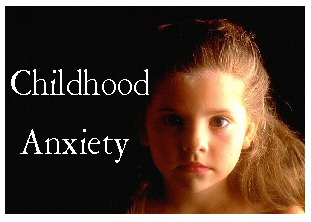
We assume that parents intuitively know when their child has a problem. Yet in about half the cases of childhood anxiety, mom and dad have failed to recognize what is going on (Berstein and Layne 2004). See if you’ve observed any of the following symptoms in your son or daughter (he or she may have several or many):
The child:
- worries about as many as six things at a time.
- has difficulty falling asleep, unlike most children who are sleeping twenty minutes after going to bed.
- wakes in the night or early morning and can’t get back to sleep.
- has bodily complaints (headaches, abdominal pain) and obsessive concerns about bodily functions.
- seems unusually fearful of trying or doing things that other same-aged children are doing.
- is inattentive and distracted at home and school.
- seems withdrawn and has avoidance behaviors.
- is a perfectionist who may avoid schoolwork out of fear of failure.
- may participate in ritualistic behavior to ward off nervousness (taps the doorknob five times before opening, washes hands frequently to fight “germs,” repeatedly checks to see if the light switch is off, etc.). Typically this is seen in OCD (Obsessive-Compulsive Disorder).
- is troubled enough by the above symptoms that he or she is having significant problems functioning at home and school.
What causes anxiety disorder in children?
There are a number of suspected causes, some biological and some environmental. According to current theory, these children have an imbalance between the brain’s cortex and the primitive centers for emotion and sensory input. Children with anxiety disorder often have parents who also struggled with anxiety in their youth, indicating a genetic tendency. But some children start showing these symptoms after some sort of highly emotional trigger in their lives, such as a death in the family, contention or divorce between their parents, a family move, or witnessing something traumatic or violent.
What can be done?
A psychological assessment should be conducted, to determine the underlying cause for these behaviors. Based on the findings, a treatment plan should be created. In the classroom, a safe, supportive environment should be encouraged, where children are taught that everyone makes mistakes. Interestingly enough, these children often feel relief when they are able to talk openly about the fact that their worries seem to control them. Try asking questions that could initiate a discussion. “Do you think you worry a lot? More than most kids your age? What kinds of thing do you worry about?” Don’t pressure the child, and use humor and an easy-going attitude. There are medications which may help these kids in extreme cases, and a psychiatrist should be consulted. Cognitive behavioral therapy, conducted by a counselor or psychiatrist, might be a good recommendation. The child could be taught to avoid “awful-izing” and to become desensitized to the anxieties that are troubling him or her. Techniques such as “thought blocking” might be used. Children with anxiety disorders are eligible for special education (which refers to special classroom accommodations), according to the Individuals with Disabilities Education Improvement Act of 2004 (IDEA).
Kristyn Crow is the author of this blog. Visit her website by clicking here. Some links on this blog may have been generated by outside sources are not necessarily endorsed by Kristyn Crow.
Related Articles:
Emotional Disturbance in Children
What Will Happen in Your Child’s Psychological Assessment?
Syndrome Soup: When Your Kid Has a Mixed Diagnosis

